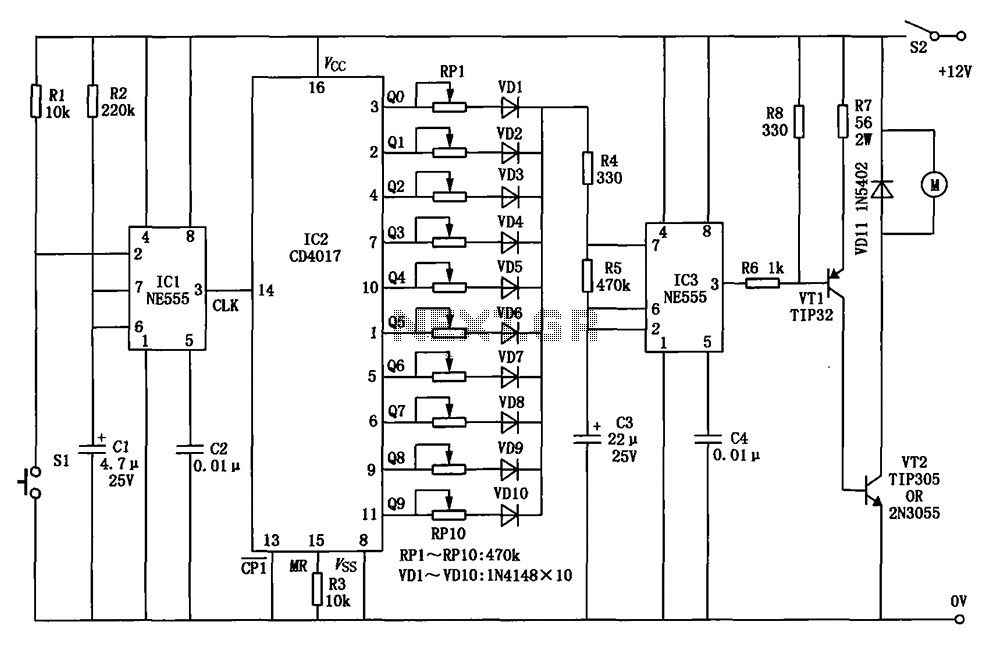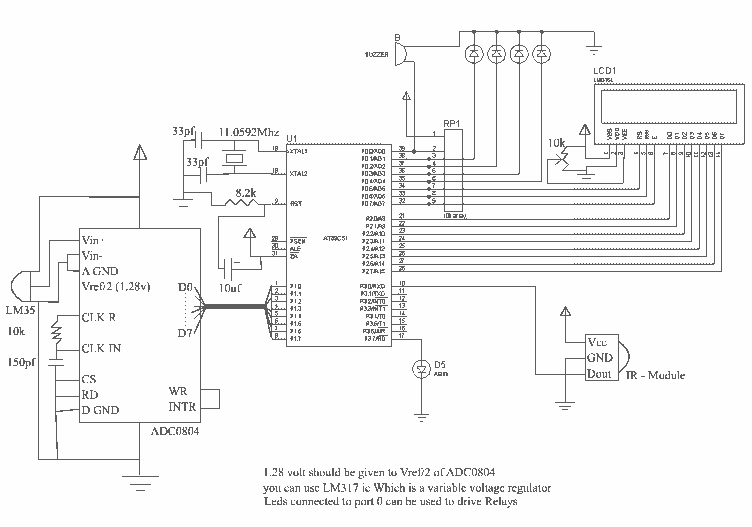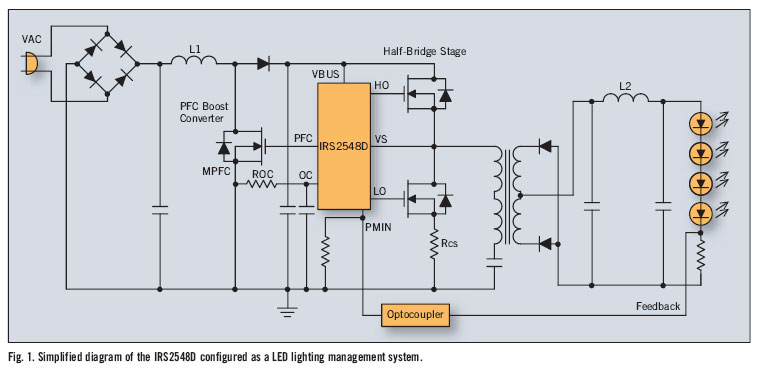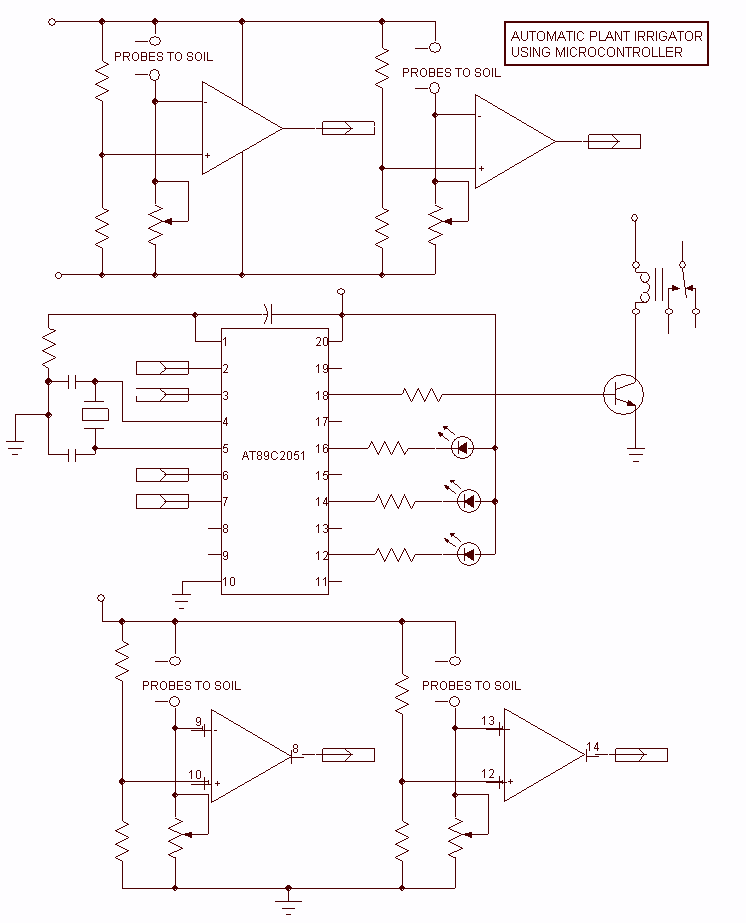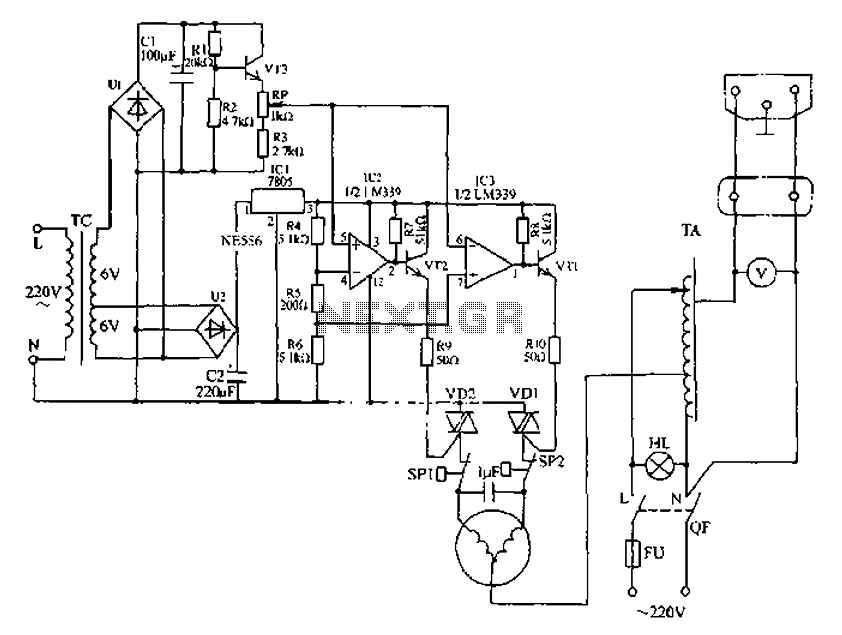
With TWH9248 9249 an auto lighting
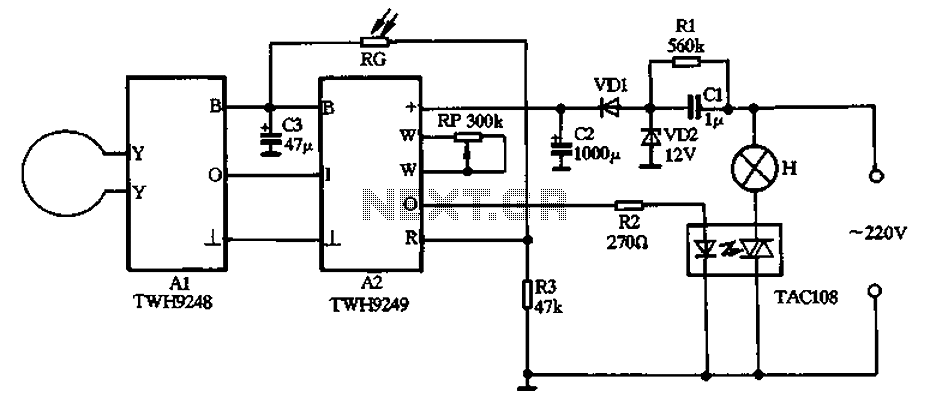
The circuit operates on 220V AC input and utilizes a CL buck converter, a VDI rectifier, and a VD2 regulator along with a filter capacitor (C2) to provide a stable 12V DC output for module A2. Module A2 includes an internal 6V regulator that outputs a 6V DC voltage. A sensitive electrical resistor (RG) is connected across the gate control terminal of the TWH9249, which is linked to the 6V output terminal (B). The circuit features an automatic light control function that prevents operation during the day, keeping the lamp (H) off. At night, or in low light conditions, the circuit resumes normal operation. When a body moves within the detection range, the module detects microwave signals reflected from the body. The internal processing circuit generates a delay signal at terminal A2, activating the solid-state relay (TAC108) to turn on the lamp (H). If the human body remains motionless after the initial detection, the lamp will turn off after the delay signal. If movement is detected again, the lamp will remain lit. A potentiometer (RP) is included to adjust the sensitivity of the detection.
The described circuit is designed for automatic lighting control using a microwave detection system. The 220V AC input is first converted to a lower voltage using a CL buck converter, ensuring efficient power management. The VDI rectifier converts the AC voltage to DC, while the VD2 regulator stabilizes the output voltage to 12V DC, which powers the entire module A2. The filter capacitor (C2) smooths the output, ensuring stable voltage for sensitive components.
Module A2 incorporates an internal regulator that steps down the 12V to a 6V output, which is necessary for the operation of the TWH9249 gate control terminal. The sensitive resistor (RG) plays a critical role in controlling the gate of the TWH9249, allowing for the modulation of the signal based on the 6V output. This setup is essential for enabling the automatic light control feature.
The circuit's functionality is particularly notable during nighttime or low-light conditions when it detects movement. The microwave detection system works by emitting microwave signals and analyzing the echoes reflected back from any moving object, such as a human body. Upon detecting movement, the internal processing circuit at module A2 generates a delay signal that activates the solid-state relay (TAC108), which in turn powers the lamp (H). This provides immediate illumination in response to detected motion.
The delay mechanism ensures that the lamp does not turn off immediately after the motion ceases, allowing for a grace period during which the light remains on. This feature is designed to enhance user convenience, as it caters to brief movements without causing the lamp to flicker or turn off unexpectedly.
Furthermore, the inclusion of a potentiometer (RP) allows for fine-tuning of the detection sensitivity, enabling the user to adjust the system based on environmental conditions or specific requirements. This flexibility ensures that the circuit can be adapted for various applications, making it suitable for both residential and commercial lighting solutions. Overall, this circuit exemplifies a practical application of modern electronic design principles in creating an efficient and user-friendly automatic lighting system.220V AC by Cl buck, VDI rectifier, VD2 regulator and filter capacitor C2, output stable 12V DC voltage for use module A2, Al through internal A2 6V regulator outputs in 6V DC v oltage. Sensitive electrical resistor RG connected across TWH9249 gate control terminal R 6V voltage output terminal B, the circuit has an automatic light control function, the circuit will be blocked during the day does not work, H lamp is not lit, at night or when comparing light dark circuit that is able to lift the blockade restored to normal operation. When the body moves within the detection range, the module receives a microwave transmitter and the microwave echo reflected from the body compared to the more, the internal processing circuit by O terminal A2 output a delay signal to the solid state relay TAC108 turned on, the lamp H namely lit.
As the human body or human remains absolutely motionless after the departure, after the delay signal lamp goes out. If people move back, the lamp H will continue to light up. Circuit potentiometer RP can be used to adjust the detection sensitivity.
The described circuit is designed for automatic lighting control using a microwave detection system. The 220V AC input is first converted to a lower voltage using a CL buck converter, ensuring efficient power management. The VDI rectifier converts the AC voltage to DC, while the VD2 regulator stabilizes the output voltage to 12V DC, which powers the entire module A2. The filter capacitor (C2) smooths the output, ensuring stable voltage for sensitive components.
Module A2 incorporates an internal regulator that steps down the 12V to a 6V output, which is necessary for the operation of the TWH9249 gate control terminal. The sensitive resistor (RG) plays a critical role in controlling the gate of the TWH9249, allowing for the modulation of the signal based on the 6V output. This setup is essential for enabling the automatic light control feature.
The circuit's functionality is particularly notable during nighttime or low-light conditions when it detects movement. The microwave detection system works by emitting microwave signals and analyzing the echoes reflected back from any moving object, such as a human body. Upon detecting movement, the internal processing circuit at module A2 generates a delay signal that activates the solid-state relay (TAC108), which in turn powers the lamp (H). This provides immediate illumination in response to detected motion.
The delay mechanism ensures that the lamp does not turn off immediately after the motion ceases, allowing for a grace period during which the light remains on. This feature is designed to enhance user convenience, as it caters to brief movements without causing the lamp to flicker or turn off unexpectedly.
Furthermore, the inclusion of a potentiometer (RP) allows for fine-tuning of the detection sensitivity, enabling the user to adjust the system based on environmental conditions or specific requirements. This flexibility ensures that the circuit can be adapted for various applications, making it suitable for both residential and commercial lighting solutions. Overall, this circuit exemplifies a practical application of modern electronic design principles in creating an efficient and user-friendly automatic lighting system.220V AC by Cl buck, VDI rectifier, VD2 regulator and filter capacitor C2, output stable 12V DC voltage for use module A2, Al through internal A2 6V regulator outputs in 6V DC v oltage. Sensitive electrical resistor RG connected across TWH9249 gate control terminal R 6V voltage output terminal B, the circuit has an automatic light control function, the circuit will be blocked during the day does not work, H lamp is not lit, at night or when comparing light dark circuit that is able to lift the blockade restored to normal operation. When the body moves within the detection range, the module receives a microwave transmitter and the microwave echo reflected from the body compared to the more, the internal processing circuit by O terminal A2 output a delay signal to the solid state relay TAC108 turned on, the lamp H namely lit.
As the human body or human remains absolutely motionless after the departure, after the delay signal lamp goes out. If people move back, the lamp H will continue to light up. Circuit potentiometer RP can be used to adjust the detection sensitivity.
